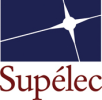Covalent grafting onto self-adhesive surfaces based on aryldiazonium salt seed layers
Résumé
The chemistry of aryldiazonium salts has been thoroughly used in recent years to graft in a very simple and robust way ultrathin polyphenylene-like films on a broad range of surfaces. We show here that the same chemistry can be used to obtain self-adhesive surfaces. This target was reached in a simple way by coating various surfaces with chemisorbed organic films containing active aryldiazonium salts. These self-adhesive surfaces are then put into contact with various species (molecules, polymers, nanoparticles, nanotubes, graphene flakes, etc.) that react either spontaneously or under activation with the immobilized aryldiazonium salts. Our self-adhesive surfaces were synthesized following a simple aqueous two-step protocol based on p-phenylenediamine diazotisation. The first diazotisation step results in the robust grafting of thin polyaminophenylene (PAP) layers onto the surface. The second diazotisation step changed the grafted PAP film into a poly-aryldiazonium polymer (PDP) film. The covalent grafting between those self-adhesive surfaces and the target species was achieved by direct contact or by immersion of the self-adhesive surfaces in solution. We present in this preliminary work the grafting of multi-wall carbon nanotubes (MWCNTs), flakes of highly oriented pyrolytic graphite (HOPG), various organic compounds and copper nanoparticles. We also tested these immobilized aryldiazonium salts as electropolymerization initiators for the grafting-to process.
Domaines
Matériaux| Origine | Fichiers éditeurs autorisés sur une archive ouverte |
|---|
Loading...

